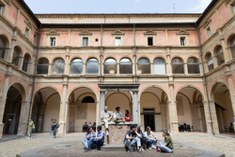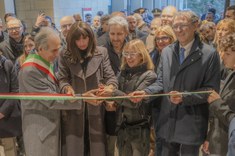Artificial intelligence is set to unlock hidden treasures in the data from the Euclid Space Telescope

This remarkable Euclid snapshot captures 1,000 galaxies in the Perseus Cluster and more than 100,000 other galaxies further away in the background, each containing up to hundreds of billions of stars. (Image: ESA/Euclid/Euclid Consortium/NASA, image processing by J.-C. Cuillandre (CEA Paris-Saclay), G. Anselmi
The ELSA project aims to push the boundaries of what can be learned from the data collected by Euclid, the European Space Agency's (ESA) new space telescope. This is the ambitious challenge of ELSA, a new Horizon Europe research project that will use artificial intelligence to uncover the hidden details of the faintest and rarest galaxies.
Launched into orbit in July 2023 and officially active since the beginning of this year, Euclid is exploring the universe in search of dark matter: its primary mission is to map more than a third of the sky. Over the next six years, it will observe billions of galaxies across ten billion years of cosmic history.
Its vast archive of images and spectra will be a gold mine for studying the formation and evolution of galaxies throughout the history of the Universe. However, the richest veins of gold are also the most difficult to mine, and the instruments developed for the mission's primary scientific objectives are insufficient to exploit the rich legacy that Euclid's data offers the astronomical community.
This is where ELSA comes in: "Euclid Legacy Science Advanced analysis tools. The project was conceived by a team of astronomers from four European countries with the idea of using artificial intelligence to extract the valuable information hidden in the vast data generated by Euclid. To do so, the scientists will rely on the high-performance computing cluster at the University of Bologna's Open Physics Hub, thanks to new computer hardware acquired for the occasion by ELSA.
"In astronomy, we have entered the era of big data," explains Margherita Talia, researcher at the Department of Physics and Astronomy 'Augusto Righi' of the University of Bologna, INAF associate and Principal Investigator of the project. "The avalanche of petabyte-scale data collected by Euclid has already begun to overwhelm us, and ELSA will provide innovative tools to find the hidden gems within it".
One of the Euclid's strengths is its ability to observe a large area of the sky at once - a key element in a mission whose primary goal is to map more than a third of the sky in six years. The observation mode used is step-and-stare: Euclid will observe an area of the sky for about 70 minutes, capturing images and spectra, and then move on to the next area within a few minutes. This process will be repeated more than 40,000 times during the mission.
"All Euclid data will be made available in the European Open Science Cloud through Virtual Observatory tools such as ESA Sky: Euclid's Early Release Observations are already available", adds Stephen Serjeant, co-leader of the ELSA working group on citizen science. "Our plan is to be inclusive and invite volunteers to examine the Euclid data with us and help us train machine learning algorithms to find rare treasures".
The ELSA - Euclid Legacy Science Advanced analysis tools project, funded by Horizon Europe, is coordinated by the University of Bologna and involves the National Institute of Astrophysics (INAF), The Open University (UK), the University of Bristol (UK), the CEA (France) and the Universidade do Porto (Portugal).






